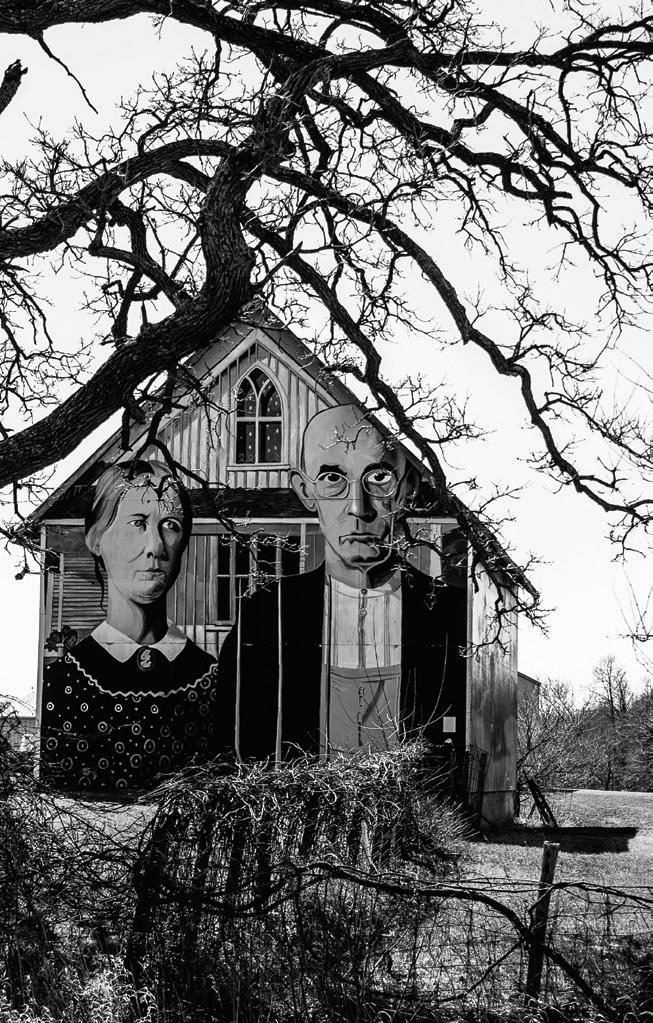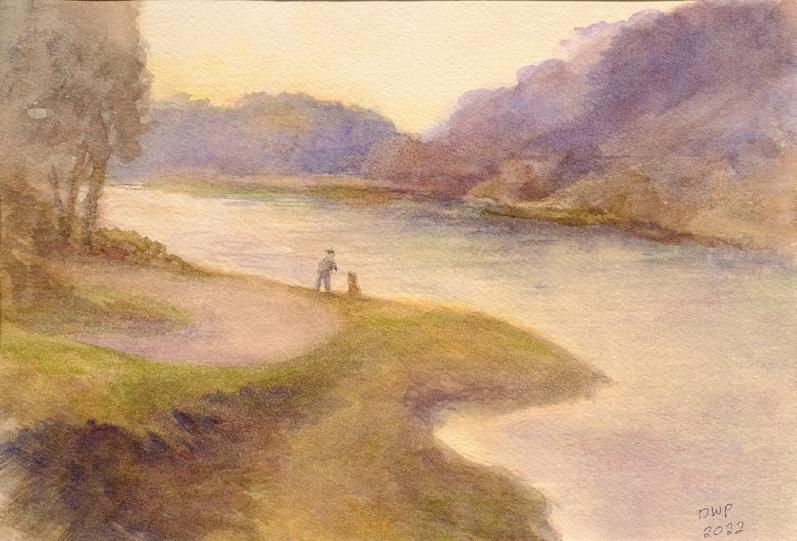
6 minute read
Sounding Our Place
Debra Marquart, Poet Laureate, State of Iowa
in the sPring oF 2022, artist and gallery owner of Mount Vernon Creates, Denise Murphy, issued a call to artists for “plein air” portrayals of Mount Vernon and Lisbon, Iowa. The French term, plein air, generally refers to paintings—most often landscapes— that are finished outdoors within view of the painting’s subject. Mount Vernon Creates expanded the call for the project, “Portrayal of Mount Vernon 2022,” to include other art forms. The call read as follows: “Join area artists as they use their creative skills to express their love of Mount Vernon and Lisbon, Iowa. Painters, photographers, sculptors, and other artists line the streets, parks, and Cornell campus demonstrating their craft.”
Advertisement
Dozens of artists came out to paint and create on the day of the event and submitted their work to the “Portrayal of Mount Vernon 2022” project, which went on display in an exhibition from May 8 through June 30, 2022. Three of the submitted pieces were also chosen to receive top honors. The three ekphrastic poems you see here were written in response to these award-winning works of art. The Greek word, ekphrasis, means “description,” and in Ancient Greece, the term applied to especially vivid writing that depicted a character or scene. However, more recently, ekphrastic writing has come to be known as a form of writing—most often poetry, but increasingly other prose forms— that depicts and responds to a work of art.
On June 12th, an enthusiastic crowd of artists gathered at Mount Vernon Creates to hear the announcement of winners and to listen to me read the ekphrastic poems. The gallery space was full of interested parties—not only the artists whose work graced the walls of Mount Vernon Creates, but also members of the community who came to hear music and poems. It was an eclectic and engaged audience. At the end of the event, we announced the three winners, each of whom came forward to be acknowledged as I read the poem based on their winning piece. In this way, all afternoon, we shifted our attention from image to words to poetry to song and then back to image—in celebration of the many ways that art helps us experience and understand the rich world in which we live.
I had the opportunity to be a part of this day through a fellowship I had received from the Academy of American Poets (AAP), “Sounding Our Place.” For the fellowship, I had proposed creating a series of experiential events around the state of Iowa, partnering with naturalists and environmental workers to lead hikes and nature walks, followed by creative writing workshops in which participants could write about what they had just learned and experienced. These events did occur throughout the state, and, as often happens with collaboration, new ideas and opportunities formed along the way. Writing these ekphrastic poems was one of those delightful surprises. When Denise Murphy contacted me to see how I might tie my fellowship work into the “Portrayal of Mount
In a Certain Light
I used to think Grant Wood’s perfect Iowa landscapes of rolling green hills like Young Corn and Haying were mere painterly exercises
in optimism, romantic yearnings on canvas for a bygone era, until a few years passed and I drove enough Iowa roads, especially
early morning and late afternoon journeys, and I saw Iowa at a certain angle, in a certain light—rows of symmetrical corn fields and
rusted orange soybeans gleaming for harvest. Just as today driving Highway 1, a clustered city of brick buildings skirted by columnar cypresses
and poplars rose in the distance. Through soft light at low angles, I passed meadows lit with gold, edged by low-lying mulberries
and dogwoods, framed by sycamores and bur oaks, those deep green overseers who stand tall and guard the beauty.
—debra marquart
Based on Mount Vernon from Highway 1, Jeff Allen
Vernon 2022” project, I suggested that I could write ekphrastic poems in response to the top vote-getters.
This day in Mount Vernon, and through my travels across the state offering the experiential writing workshops, I have found so many things in the state of Iowa that inspire my curiosity and wonder—especially in local history museums and in art museums around the state. No matter what I write—poems, songs, essays—I always do a great deal of research, most of which never shows up overtly in the writing itself, but rather serves as a foundation of knowledge for me as I draft the work. In the case of the “Portrayal of Mount Vernon” poems, I researched the geology of the region, the flora and fauna of Iowa, the history of Pallisades Kepler Park, and the art of Grant Wood—all because the winning pieces alluded to these subjects. Reading these pieces to the artists attending the reception, I was reminded of how much we can learn about the world through interdisciplinary inquiry and engagement.
Mount Vernon Creates: https://www.mountvernoncreates.com/? page_id=16380 Debra Marquart website: https://debramarquart.com/poet-laureate/

The House the Tree Claimed
Twisted oak boughs frame the roof. Bare branches and twigs have grown
over the unsmiling faces of the couple who once lived here. Grim and gothic,
they are hemmed in now by thorny brambles, rusted chicken wire.
The arched attic window looks on through polka dot curtains, frayed
from years of silent witness to the wife’s domestic efforts—the flowerpot
on the porch sill, the rickrack apron and cameo brooch, cookies baking, no doubt, in the oven, a place made ready for company. It’s a wonder
no one ever visited. Her worried side eye glance reveals the reason—
the husband’s grouchy smirk and dead eye stare. Pitchfork still in hand,
tines upturned and sharp. Behind them, the empty sky, cloudless and sunless.
—debra marquart
Based on Midwestern Regionalism, Cassidy Oates
The Perfect Day
So many things we think we need in this world when really all that’s required is this river and a dog, make that a bend in the river and an eager dog ready with the short stick he expects you to throw
then throw again, as you amble along the banks of the Cedar River under canopies of white oak and basswood. On the other shore, limestone bluffs rise up, palisade cliffs once underwater
sediment accruing 425 million years ago during the Silurian when all where you walk was shallow seabed, now risen up and crowding the horizon with red cedars and sugar maples,
green maidenhair ferns and mossy liverwort. This place, so ancient, where you stop with your dog, who doesn’t know or care that a mammoth molar was once discovered here or that nearby pre-historic mounds with unearthed pottery shards and flint knives suggest human habitation dating back millennia. Who needs to know these things to have the perfect day?
Cerulean warblers and scarlet tanagers may flit from branch to branch. A bobcat may crouch on an outcropping behind gooseberry and blink its green-gold eyes. Linger here, on this point
near the bend in the river. Throw the stick and watch your tongue-wagging dog retrieve it.
—debra marquart
Based on Palisades Kepler 1, Doran Pearson







